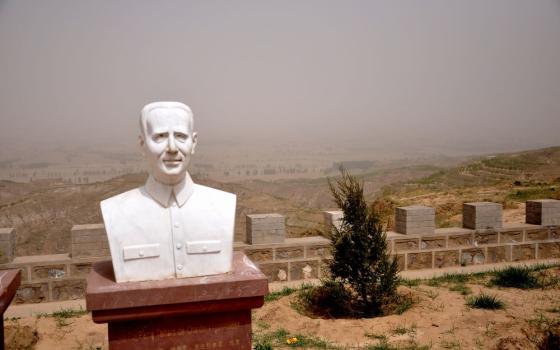
EARTH & SPIRIT
“When it’s hot, Mr. John and I work with cabbage leaves on our heads,” teenager Justin Burrell told me, then reached down, plucked one and wore it to show what his unique fashion statement looked like.
Justin is a 19-year-old gardener with Troostwood Youth Garden in the urban core of Kansas City, Mo. “Mr. John” is his mentor, John Kaiahua, who has farmed for over 20 years selling his produce in a community-supported agriculture (CSA) subscription-buying project.
Justin works at the inner-city garden with other neighborhood youth, hoeing weeds, digging up potatoes, planting and picking all kinds of produce, from mustard greens to beets, radishes to eggplants. Under Kaiahua’s guidance, they start work in January, planting seedlings in the greenhouse, and finish up in November when the last green tomatoes are rescued from the month’s hard freezes.
If you stop by the corner of 52nd and Paseo on a Saturday morning in the summer, Justin or his sister Jessica will sell you produce at the market located near the half-acre garden.
Gardening is a labor of love, but it’s also a way of creating healthy neighborhoods, according to Troostwood’s founder, Ericka Wright, who is Justin Burrell’s aunt. Wright is not your typical farmer.
Disabled from muscular dystrophy, Wright gets around the garden that borders the family’s two-story house in a motorized scooter. Her family started Troostwood Garden on their property as an activity for neighborhood youth. The area was a haven for petty crimes like vandalism and other activities of bored teens, Wright said. Not far away there was a brutal drive-by shooting. A neighbor was arrested for a road rage murder.
“I don’t know if it will turn a good profit as much as it will make better neighbors.” Wright said. No fences surround the garden yet it has never been vandalized or plundered. “The neighbor kids get the word out. They all police the garden because all of them have worked in it at one time or another.”
She pays the neighborhood kids with money earned at the market and from grants, one from the Catholic Campaign for Human Development.
“Most of our kids live with an auntie, grandparent or a single parent. The stipend helps keep the kids from feeling embarrassed around their friends, which can lead to stealing or worse,” Wright said. “Kids also learn so much working here; it’s a good supplement to their cookie-cutter education, learning where food comes from, how good it tastes when it’s freshly picked. They experience firsthand the rewards of hard work. Young males work all day with older males; girls spend quality time with their grandmothers.”
When she first conceived the idea, Wright knew the empty lot next door was owned by nearby Rockhurst University. She went to Jesuit Fr. Ed Kinerk, then president, and asked if the land could be used as an entrepreneur project for the neighborhood. Kinerk agreed. Rockhurst students helped break ground for the first plantings.
On a corner lot the vegetable beds adjoin a busy sidewalk. Pictures of cabbages, collards and carrots are mounted on real estate signs with text underneath explaining what each does for health, how to grow it, and a recipe. “As people tour our garden they’ll learn about what it grows. The kids are the tour guides. By the end of the season neighbors and visitors will know lots about good nutrition.”
Troostwood’s mentor, John Kaiahua, is a retired Marine Corps Vietnam vet. The Hawaiian native farms his own land in a suburb and advises the Wrights on organic growing methods. Some of the produce grown by Troostwood’s youth supply his subscription CSA that feeds about 30 families city-wide.
Justin Burrell works the peak growing months with “Mr. John.” His pay goes to a savings account for college or further training in urban agriculture. His outdoor education now includes listening to the morning serenades of mockingbirds and bluebirds, relocating newborn rabbits out of the tractor’s tilling path, guarding ripened corn crops from marauding raccoons, and even constructing mud walls.
At one edge of Troostwood sits the “cob shed,” a small multipurpose building that demonstrates an age-old building technique using inexpensive materials. Sand, clay, straw and shredded corncobs, mixed by the bare feet of the neighborhood’s youth, make the sturdy walls. Wright described the building process: “Our kids walked in place for miles to knead the mud mixture, then we incorporated materials rescued from the neighborhood -- clay tile from an old grocery store, bricks from a condemned house down the street.”
The youth did the final decoration of the shed, molding the drying mud into faces and placing their handprints and bits of colored glass in dazzling patterns. The shed gives the garden site a unique look, countering the strip mall standardization of most new construction in the city.
“It’s all an asset to this inner-city corner that most had given up on,” Wright said. “The kids know how to feed themselves well, how to do hard work that pays off. Every block in every inner-city neighborhood has a vacant lot or two. Every one should have a garden like ours.”






